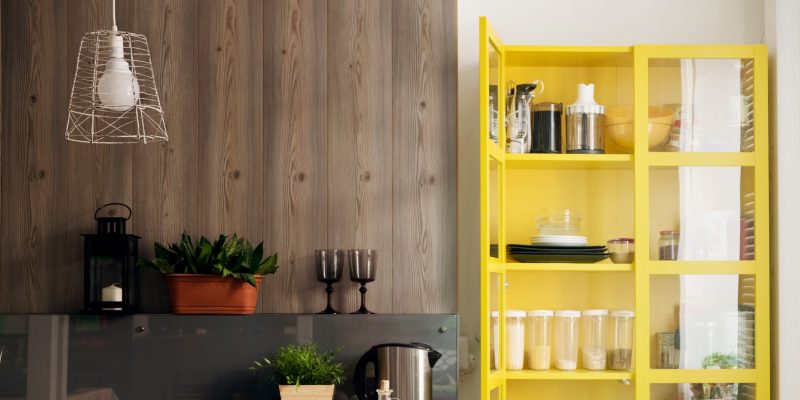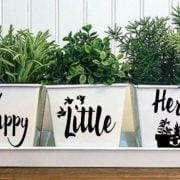Decluttering and organizing your pantry seems like a very tedious task at hand. But you’ll be astounded to know that organizing one’s pantry does not only help one to improve one’s productivity, gives better clarity of mind, and save time but it also significantly reduces your grocery expenses.
And how exactly will it help reduce your grocery expenditures? You see, after you’ve decluttered your pantry, you will be stunned at how little you’ll spend on ingredients. As you’ll be aware of the number of provisions you already have at home but couldn’t find it either because you were too lazy to search for it in midst of all the disorderly mess in your pantry. Or, because you just couldn’t find it as it was buried away in one of the forgotten corners of your pantry shelf.
Now that you’re well aware of all the pros of organizing your pantry, you must be wondering, “how will I go about organizing my pantry efficiently?”. You don’t have to break a sweat about researching and going through the pain of trial and error since we’ve got you covered on this one!
So let’s get started.
1. Clean Out The Pantry
The first and foremost step is to remove all the items from your pantry like squirrel food which you forget about after keeping it here. Group them on the basis of expired and non-expired products, discard the expired supplies then clean all the shelves and cabinets thoroughly. Make sure there is no infestation or filth anywhere. In case of infestation use food-grade pesticides and insecticides, ex- dr. earth final stop disease control fungicide, safer brand neem oil concentrate, etc.
2. Pantry Décor
After cleaning and clearing out the pantry space thoroughly, give your pantry a makeover.
Add new wallpapers or paint them. add adequate lighting and furnish it with a good amount of flair! After all, an aesthetically pleasing pantry might inspire you to cook healthy home-cooked meals regularly.
3. Storing Foodstuffs Efficiently
Now that you’ve discarded spoiled foodstuffs and cheapest vegetables which was about to spoil, sort the remaining supplies in order of shelf lives and see if they need to be protected from moisture and air.
In case of jams, pickles, and other foods with long shelf lives, store them in airtight jars and containers away from humidity. Trust me, you will thank us later 🙂
Other supplies can be stored in Tupperware. Root vegetables and other condiments can be placed in baskets or dry compartments.
4. Labeling Your Ingredients And Supplies
The next step of the decluttering process should be labeling your supplies. This might seem like a cumbersome job, but with the help of a few stationery supplies and a bit of creativity, you can spice up your label game by customizing your labels. And then, using them to organize your pantry supplies resourcefully. You can also take help from Uncluttered Simplicity where you get more ideas about how to declutter things. Labeling jars, containers, baskets, and bins in your pantry is an important step to keeping everything well-organized and preventing things from going missing.
A list of tools you can use for labeling:
- Label maker- Label makers are mobile and they offer a plethora of fonts and sizes.
- Sharpie oil-based marker labels- these are convenient to use if you are comfortable with your handwriting and prefer writing on the object that needs to be labeled instead of sticking a label or tying a tag.
- Circuit machine- can be used to cut any labeling material of your choice into any shape or dimension.
You can also take inspiration from Pinterest to get more ideas on how to label the right way. Pinterest is a gem when it comes to home improvement ideas.
5. Placement Of Labeled Supplies
After labeling your pantry items, go about organizing them in shelves alphabet-wise, or in the order of ingredient utility. Whichever pantry supplies
are frequently used should be easily accessible to the person opening the supplies.
For example, keep the snacks and kids’ food on the lower and bottom-most shelves which can be easily accessed by children.
6. Organizing Cabinets And Shelves
Create food zones for better organization and clarity. You wouldn’t want to look for eggs in a compartment full of spices, would you? To make your kitchen experience easier, we recommend you to segregate foods on the basis of their category, for example- fruits and vegetables, dairy and proteins, pulses and grains, baking provisions, etc. On the basis of this grouping, put them in appropriate cabinets.
7. Additional Customized Storage
After you’ve arranged your food items in their respective storage areas and you find that you still have a lot of food items yet to accommodate. Don’t panic! We’ve got you covered on this one too.
Try DIY customizable shelves that can increase your pantry space. Get creative and install multipurpose pantry shelves that take up less space and also adds to the aesthetics of the area.
After all, organized food cabinets and up-to-date pantry is the secret to delicious home-cooked meals!














Comments